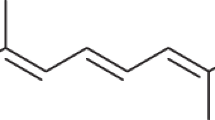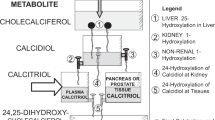Abstract
THE communication on the "Conversion of Cholesterol to Provitamin D 3 in vivo" by Mary Scott, J. Glover and R. A. Morton in Nature of April 2, p. 530, prompts us to publish our results for the provitamin in clams. In order to obtain experimental evidence for the hypothesis that the provitamin D is essentially of endogenous origin, we investigated several years ago the sterols of the viscera and of the eviscerated body of clams. At the time when the clams were collected (late summer) their intestinal tract was filled with a dark green paste, indicating that the food consisted predominantly of chlorophyll-bearing micro-organisms such as algæ. The sterols isolated from the viscera contained 21·4 per cent provitamin D (determined spectroscopically and calculated as ergosterol). On the other hand, the sterols from the eviscerated body contained only 7·8 per cent provitamin D. Based on the weight of the fresh material, the viscera contained 0·0418 per cent provitamin D and the eviscerated body 0·0163 per cent. The total provitamin D content of the clams was found to be 0·019 per cent, and 24 per cent of the total provitamin D was in the viscera.
Similar content being viewed by others
Article PDF
References
Waddell, J., and Kennedy, G. H., J. Assoc. Official Agric. Chem., 30, 190 (1947).
Author information
Authors and Affiliations
Rights and permissions
About this article
Cite this article
ROSENBERG, H. The Provitamin D in Clams. Nature 164, 795 (1949). https://doi.org/10.1038/164795a0
Issue Date:
DOI: https://doi.org/10.1038/164795a0
Comments
By submitting a comment you agree to abide by our Terms and Community Guidelines. If you find something abusive or that does not comply with our terms or guidelines please flag it as inappropriate.



